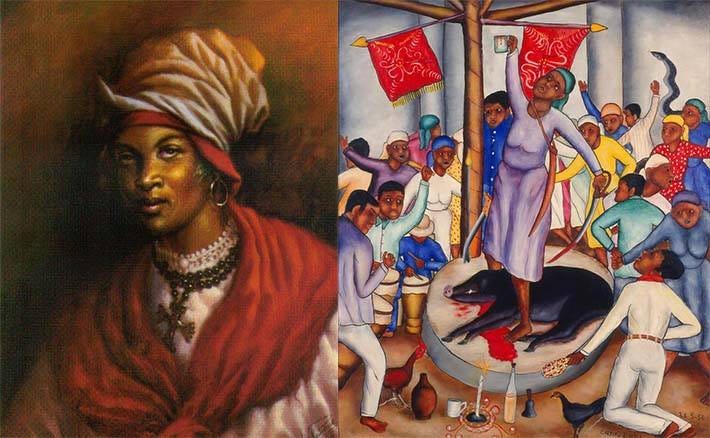Women in Haitian Resistance
April 29, 2025
By: Nyala Thompson Grunwald, Ashley Onfroy, Fiona Compton

The Haitian revolution
The Haitian Revolution was a pivotal moment in Caribbean regional history, carrying a ripple effect across the legal, political, social and economic infrastructure of colonisation and enslavement, and more importantly to revolutionary movements that consistently disrupted colonial power through the entire archipelago. Several of the stories of revolution even cited here are to a great extent related to what happened in Haiti, from 1791-1804.
The Haitian Revolution also demonstrates how resistance in the Caribbean is far more than the stories and moments that were recorded by colonial authorities: our ancestors constantly disrupted the oppression of enslavement and colonisation. Here, the Haitian Revolution was the culmination of several instances of resistance across the island, for instance claiming the legacy of Makandal, an enslaved African who, along with his maroon community, carried out over a decade of poisoning attacks on enslavers and their households in Haiti. In 1757, Makandal planned an island-wide poisoning attempt, to poison every single enslaver in Haiti. He was captured and set on fire, but the story goes that his soul escaped, and still roams through Haiti.
Cécile Fatiman
The 1791 Revolution itself would not have started without communal gathering, for the ceremony of Bois Caiman, with leaders such as Cécile Fatiman. She was a Vodou priestess of mixed heritage. Her mother was an African woman who was sexually assaulted on a slave ship on her way to Haiti and then gave birth to Cécile. Cécile learned about Vodou and became a Vodou priestess. She, along with Boukman Dutty, partook in a ceremony to ignite the spirits of the Haitian enslaved population into resistance and revolution. She said that she was taken by the spirits, Erzulie, when they sacrificed the pig. She started to speak about a rebellion, speak about resistance and speak about freedom. And this was the birth of the Haitian Revolution.
Without Cécile, there might not have been a Haitian Revolution.
This resistance has a lineage. Decades after Makandal’s revolt, one of the leaders of the revolutionaries, Jean-Jacques Dessalines, claimed, in spirit, a descendance from Makandal, as did several other leaders of the Revolution. Jean-Jacques Dessalines rose to prominence as the leader of Haitian revolutionaries after Toussaint Louverture’s capture and subsequent exile, leading Haitians to independence on January 1st, 1804. And yet, who contributed to shaping his consciousness, and that of several other revolutionaries? Who taught him to fight, to organise entire troops fighting for liberation?A revolutionary woman named Adbaraya ‘Gran’ Toya.
Adbaraya ‘Gran’ Toya
Do you know the story of Adbaraya ‘Gran’ Toya? She was one of the N’Nonmiton/Agojie Dahomey warriors who was captured and sold into chattel slavery. As a highly trained warrior and healer, she continued to lead and organise military resistance in Haiti (formerly St Domingue) after surviving the trauma of the Middle Passage.
Toya taught many to fight, including Jean-Jacques Dessalines, who went on to become the first leader of the independent Republic of Haiti. During the Revolution, Toya led several revolutionary troops, and was a crucial leader during this time. Dessalines considered her his ‘Aunty’, and gave her the honorary title of ‘Duchess’ following independence.
She remained an important part of Dessalines’ government, and was given a state funeral upon her death in 1805.
These two revolutionary women provide merely a few examples of the many ways women were central to resistance to chattel slavery, and in the Haitian Revolution specifically, as spiritual leaders, fighters, nurturers and healers.
Further Reading
- Learn more about other ways women resisted chattel slavery in this article in conversation with Fiona Compton of Know Your Caribbean.
- Read more about women as everyday revolutionaries in this article by Nicole Plummer, PhD, Institute of Caribbean Studies, Faculty of Humanities and Education, UWI, Mona
